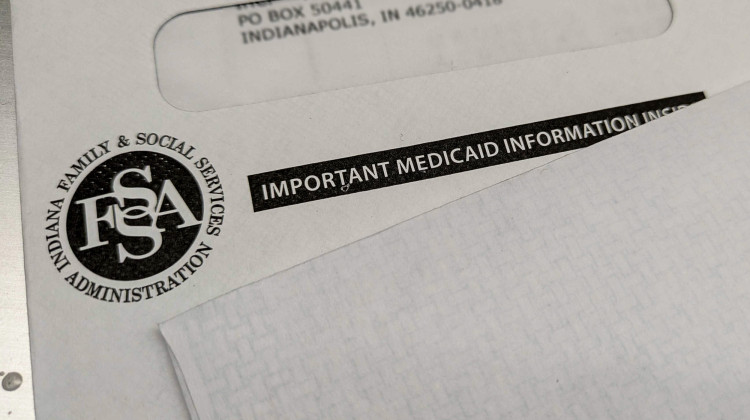For the first time in its 58-year history, Medicare will soon begin to negotiate prices directly with drugmakers. On Sept. 1, the federal agency will target its first 10 drugs, which will likely include common treatments for cancer and diabetes, for historic price negotiations.
Drugmakers around the globe are bracing for a major shakeup in how Medicare, one of their largest customers, does business. This new negotiating power could save the federal government nearly $100 billion by 2031 and slash some prices Medicare pays by half. But major drugmakers –– including Merck and Johnson & Johnson –– are fighting this authority in court to halt price negotiations.
Exercising this new power requires Medicare to grapple with a difficult question: What makes a drug price fair?
Whatever approach the agency takes to answering that question could have major ripple effects on both the affordability and availability of prescription drugs — now, and for decades to come.
Medicare navigates difficult decisions about how it will flex its new power
Private companies who manage Medicare prescription drug plans already wring some discounts from drugmakers, but their bargaining power is limited and their incentives do not always align with the government's.
With this new authority, Medicare can begin to push back far more firmly and directly on some of the prices that the agency sees as unjustly high.
“This negotiation process really turns the tables,” said Ben Rome, a physician at Brigham and Women's Hospital and researcher at Harvard Medical School.
The first phase of the process turns on this central question: How much more or less money is the drug under negotiation worth compared to other available treatments for the same condition?
To answer that question, Medicare must first determine what makes a drug strictly comparable.
“In some cases that's going to be very easy,” Rome said. “But in many cases, Medicare is going to struggle with how broadly or narrowly to define the alternative therapies.”
Take Eliquis, for example — many experts expect the $561-a-month drug that prevents and treats unwanted blood clots to be among the first 10 drugs selected for negotiation. Eliquis is typically prescribed to patients who have a common heart condition called atrial fibrillation or who have developed blood clots deep in their veins.
The treatment has three close competitors that work in similar ways and have sticker prices well over $100 a month. A fourth, much older treatment option, known as warfarin, runs less than $10 monthly.
The clinical data suggest that Eliquis is often more effective than warfarin at preventing strokes, carries fewer side effects and is more convenient for patients. Some leading medical associations discourage doctors from using warfarin for certain patients. All this raises the question of whether it should be included in Medicare’s analysis if the agency targets Eliquis for negotiation.
Rome and others argue that drugs like warfarin can provide a helpful baseline.
“When there is an older alternative available, [Medicare] absolutely needs to compare the new drug to it — to get a sense of how much benefit the new product really adds,” Rome said.
In 2021, Medicare spent $12 billion total on Eliquis and paid 42 times more, on average, per dose of the drug than they did for warfarin (not including confidential discounts given by drugmakers).
Warfarin’s low price could, in theory, provide more cover for Medicare to demand a deeper discount on Eliquis. The risk, pharmaceutical executives warn, is that if the government price goes too low it could dampen the industry’s future enthusiasm for developing safer, better versions of older therapies.
Lowering prices and preserving drugmakers' incentives to innovate is a delicate dance
Although this unprecedented negotiation process presents several tricky decisions for Medicare, experts said the need to keep finding better treatments for dire diseases looms largest.
“This chronic tension between trying to make sure that we keep health care affordable and that we reward good clinical innovation — that’s a huge tradeoff hanging over this entire enterprise,” said Steve Pearson, founder and president of the Institute for Clinical and Economic Review (ICER).
While Medicare is motivated to lower the roughly $150 billion it spends each year on medications and help the nearly one in four older Americans who struggle to afford prescriptions, the agency is also aware that profits from these products help make future blockbusters possible.
“Ultimately the goal of negotiation is to improve affordability and drive innovation for the cures that people need,” said Medicare director Meena Seshamani.
By cutting prices for certain drugs more than others, Medicare has an opportunity to signal to industry the types of major innovation the agency values, such as drugs that address unmet needs or that attack diseases in novel ways.
Other countries have recipes for price negotiation, but Medicare is crafting its own
In addition to considering how innovative a drug is, Medicare must also weigh several other factors that Congress outlined in the Inflation Reduction Act — such as drug production costs and how much the manufacturer benefited from federally funded research.
Anton Avanceña, a health policy researcher at the University of Texas, said he thinks the agency should consider less obvious but important societal factors, such as how these drugs affect people’s workplace productivity or decrease their dependence on caregivers.
“These are things we know patients value and they need to be considered alongside health outcomes,” Avanceña said. Medicare has said it plans to hold patient-focused listening sessions and incorporate concerns shared by the public in its drug price analysis.
The agency then must distill down its mountain of evidence into a single price — its opening offer at the negotiating table.
Most other countries that have done similar negotiating work for years have relied on relatively formulaic, often quantitative processes to help assess a drug's value relative to its therapeutic benefits.
Government health agencies in other countries, including England and France, have long paid companies less for copycat drugs that offer fewer clinical improvements over existing therapies.
To date, Medicare has declined to borrow much from other countries’ stricter cookbooks.
“What Medicare has started out with sounds a little bit more like you take a pinch of this, a pinch of that and you throw it in a blender,” said Steve Pearson of ICER.
The agency has said it plans to take a more qualitative approach, which could vary by drug.
But drug manufacturers warned the approach could be more vulnerable to shifts in politics and create instability across the industry.
“Investing in these drugs is risky,” said Lauren Neves, deputy vice president at PhRMA, the sector trade group. “Companies need to be able to predict how much the government is going to pay for these medicines.”
PhRMA jointly filed a lawsuit in June asserting Medicare’s new power is unconstitutional.
A more replicable negotiation process could benefit private health insurance plans, too, as well as the patients they cover, who also struggle to afford prescriptions, noted Ben Rome.
A lack of trust on both sides threatens to derail negotiations
Industry watchers are uncertain whether either side will engage in a good faith negotiation after Medicare has made its initial price offer. Drugmakers have one chance to formally counter.
Some policy experts worry that the companies will default to countering with as high a price as they can get under the law, regardless of whether the data justify that high price.
Others worry Medicare will force a race to the bottom on prices, especially since the first negotiations will take place in 2024 — an election year — when it may be politically advantageous to appear tough on the drug industry.
“My concern is that there's just going to be an across the board hatchet taken to prices,” said University of Southern California health economist Darius Lakdawalla. “There absolutely are going to be drugs that don't have demonstrated value and that should have deeper price cuts, but that nuance is really important.”
If negotiation goes off the rails, whether due to legal threats or a lack of trust, people in the U.S. stand to lose more than just the nearly $100 billion in promised savings, Steve Pearson said. They would also lose a long overdue opportunity to reckon in a more public way with the limits of the country’s finite health care resources — and the difficult choices the country faces in deciding how to spend those dollars.
“This process may not live up to everyone's expectations,” Pearson said, but it offers a rare chance “to make these kinds of tradeoffs more transparent, more explicit and more open to input from all different participants, so that we can get the balance right going forward.”
This story comes from the health policy podcast Tradeoffs, a partner of Side Effects Public Media. Dan Gorenstein is Tradeoffs’ executive editor, and Leslie Walker is a senior reporter/producer for the show, which ran a version of this story on July 27. Tradeoffs’ coverage of health care costs is supported, in part, by Arnold Ventures and West Health.
9(MDAyMzk1MzA4MDE2MjY3OTY1MjM5ZDJjYQ000))
 DONATE
DONATE







 Support WFYI. We can't do it without you.
Support WFYI. We can't do it without you.